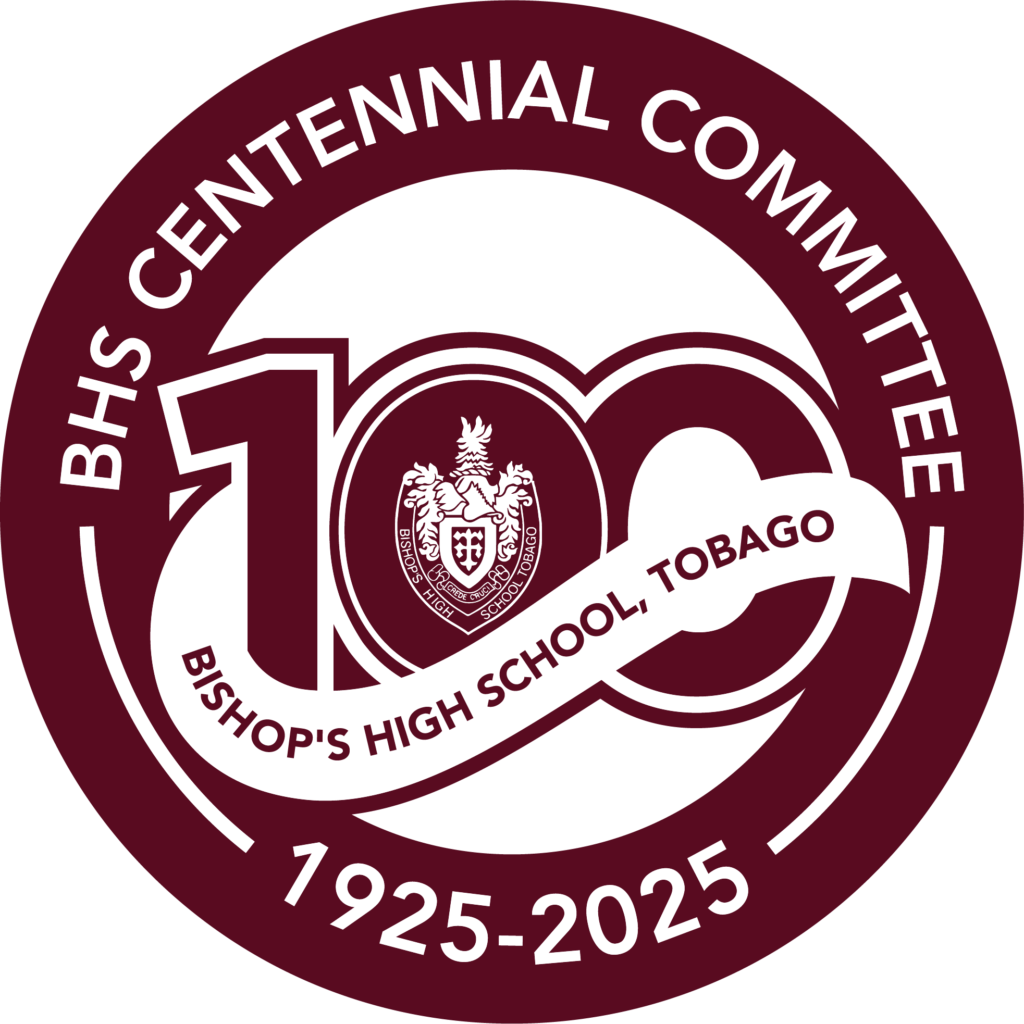THE FOUNDERS OF BISHOP’S HIGH SCHOOL, TOBAGO

The Right Reverend Bishop Arthur Henry Anstey
The Right Reverend Dr. Arthur Henry Anstey CBE DD (1873-1955) was the leading pioneer behind the establishment of the first co-educational school in Trinidad and Tobago: Bishop’s High School Tobago.
Educated at Keble College in Oxford, England, Dr. Anstey was ordained as a priest in 1898 and served in Aylesbury and Bedminster in England. . From 1904 he was appointed Principal of St Boniface Missionary College, Warminster and after that (until his elevation to the Episcopate) Chaplain to Proctor Swaby, Bishop of Barbados. He eventually served as principal of Codrington College, Barbados, West Indies. On June 29th, 1918, he was consecrated as Bishop at the Holy Trinity Cathedral in Trinidad.
Bishop Anstey had a passion for education. In 1921. He established a Church High School for Girls – today’s Bishop Anstey High School in Trinidad. Four years later, at the prodding of Tobagonian James Biggart, Anstey founded Bishop’s High School Tobago. Unlike its sister school, Bishop’s Tobago catered to both boys and girls. The school’s population was also “fully black”.
This challenged the status quo established by the seven other recognised secondary schools in Trinidad and Tobago. Students who were black and of the working class were in the minority in these institutions.
A visionary with a heart of gold, Bishop Anstey brought to life the fervent desire of Tobagonian parents: that their children would be on par with their Trinidadian counterparts and receive Cambridge certificates for their educational achievements.
Bishop Anstey was not only a trailblazer but also a generous benefactor who financed diocesan and parochial projects from his own pocket. He was instrumental in raising the funds needed to establish Bishop’s High School Tobago. Furthermore, he is credited with obtaining government assistance for Bishop’s Tobago in 1926. His success in winning Bishop’s Tobago a place in the dual education system earned the school the privilege of being the first co-educational school to receive government funding.
In 1943, Bishop Anstey’s ecclesiastical career led him to be elected Archbishop of the West Indies. Although his tenure lasted only two years owing to illness, the mark he made on the educational landscape of Trinidad and Tobago lives on through the hundreds of students who walk the hallowed halls of these prestigious institutions, annually.
For the Bishop’s High School Tobago student, Archbishop Anstey continues to be remembered at the school’s annual Founder’s Day on September 14th. His contributions have also been memorialised by the naming of one of the school’s houses in his honour.

Dr Sylvan Edward Bowles (1881 – 1963)
Dr Sylvan Bowles is the gift that keeps on giving to the people of Tobago where his generosity is immortalized through the Sylvan Bowles Scholarship Fund for the educational development of generations of children.
Sylvan Bowles was born in Patience Hill, Tobago in 1881, but grew up and attended school in Bethel. The fourth of five children, he was forced to leave school at the age of 14 when his father died. To support the family, he got a job as a store clerk in Scarborough. By age 23 he had managed to buy a ticket to New York, where he quickly got a job as a longshoreman. Eventually, having decided on a career in dentistry, he registered for evening classes to prepare for the Student’s Qualifying Certificate Examination. At age 38, he graduated from the College of Dental and Oral Surgery of New York as one of three Black students from a class of 276 and opened a very successful practice in New York.
Having made good, Dr Bowles returned to Tobago with a commitment to assist the people of the island. Although he had none of his own, children had a special place in his heart. In 1938, in announcing the launch of the Sylvan Bowles Scholarship fund, the director of Education announced that Dr Bowles had made “a valuable public-spirited gift for the purpose of providing scholarships for education for ambitious and deserving youths of Tobago.”
From 1938, six Bowles scholarships were awarded to students in Tobago, based on examinations administered by the education authorities. The scholarships were given as cash awards, for purchasing textbooks and to cover tuition fees. Each award was tenable at Bishop’s High School for three years.
At the time of his death over one hundred and fifty students had benefitted from the Sylvan Bowles Scholarship Fund, including former Chairman of the Tobago House of Assembly, former Prime Minister and former President Arthur N.R. Robinson, who was one of the first recipients.
Dr Bowles died in 1963 at the age of 82, having witnessed the fruits of his lifelong dream to help others. Following his death and in line with his wishes, the fund continued to disburse the scholarships, although at the secondary and university levels. Another change mandated by his will was that the Sylvan Bowles Scholarship Fund would now be open to students from throughout the West Indies.
In 1998, Dr Sylvan Bowles was posthumously awarded the nation’s highest honour, the Trinity Cross, in recognition of his distinguished and outstanding service. In 2012 he was recognized as one of the national icons of Trinidad and Tobago. His philanthropic work was the first of its kind in Trinidad and Tobago and one of the first in the British Caribbean.
Archdeacon Herwald Davies
Archdeacon Herwald Davies was born in England in 1877. He trained at the St Augustine College in Canterbury and was ordained as a priest in 1903. The Society for the Propagation of the Gospel (SPG), a powerful proselytizing body, which sought to strengthen the Anglican presence overseas, was responsible for sending Davies to the region.
Archdeacon Davies was appointed Curate by the SPG and was first posted at Trinity Cathedral in Trinidad until 1906 when he moved to St Andrew’s in Scarborough. There he served under Canon Browne before a posting in St. Alban’s Tortuga, Trinidad. He returned to Tobago as Rector of Scarborough in 1918 until 1932, when he was made Archdeacon of Tobago. Davies retired from active service in 1946 but continued to live in Tobago until his passing.
The Archdeacon also served Tobago under the administration of Bishop Arthur Anstey who, with support from the SPG, was intent on improving the education of the masses on the island, a matter which was frequently raised by Tobagonian activist, James Biggart.
An important part of Davies’ contribution to the church was made through his work in the schools. In particular, as the man on the ground, he played an important role in the Bishop’s High School Project, which was implemented by Bishop Anstey. Davies was responsible for the execution of the project and supervised it from initiation to the establishment of the school. Once the school was operational, he served as a member of its governing body during its first year of existence and he closely monitored and directed its development through the initial years.
Davies was bent on making the high school project a success, for he felt there was a great need for a high school on the island.
Although he felt that the children of Tobago could not be treated as English children, he was convinced that they could be elevated. He sought to influence Bishop’s operations even after he retired and, it was not by chance that he assumed residence in a building which was conveniently located in close proximity to the school at Mt Marie.
Davies worked in Tobago during a particularly difficult period when there were concerns about the union with Trinidad, lack of an adequate water supply, poor infrastructure, serious epidemics and other health problems, and the absence of opportunities for education beyond primary school. The outbreak of the two world wars added further stresses to the population.
Young Curate Davies provided much needed assistance to the doctors on the island, who were severely challenges by the rapidly spreading disease during the dysentery epidemic. Several Anglican schools were converted to temporary hospitals and Davies assisted in administering medicine to the patients.
Archdeacon Davies was devoted to the preservation of Tobago as “Anglican territory” in order to ward off the competition from the other denominations and from the “savagery of carnival” which was introduced in 1911. Davies lamented that carnival, which disturbs the community for three weeks, resulted in “lowering the religious life of the people.” Davies’ beliefs and actions seemed contradictory. He saw the people of Tobago as inferior people, but he was committed to their elevation.
Archdeacon Davies passed away in 1960 at the age of 83.
Kenneth Reid
Kenneth Reid is hailed as an illustrious member of the first Board of Directors of Bishop’s High School Tobago.
This Tobagonian plantation owner championed the cause that the school’s curriculum should include agriculture. He believed that students should be exposed to both the theoretical and practical arms of this science subject. This was in keeping with the then economic thrust of the island as an agricultural economy.
Indeed, Mr. Reid was instrumental in ensuring that students of Bishop’s High School benefited from a holistic education that embraced the classics, agriculture, domestic science and carpentry. Students were also exposed to the traditional curriculum tested by Cambridge. Thus, from the school’s inception, Mr. Reid ensured that graduates of Bishop’s High School Tobago were well prepared to contribute positively to the development of Tobago, and by extension Trinidad and Tobago.
Today, Kenneth Reid’s name resounds through the halls of Bishop’s High School Tobago as he is immortalised via the naming of one of the school’s four houses in his honour.

